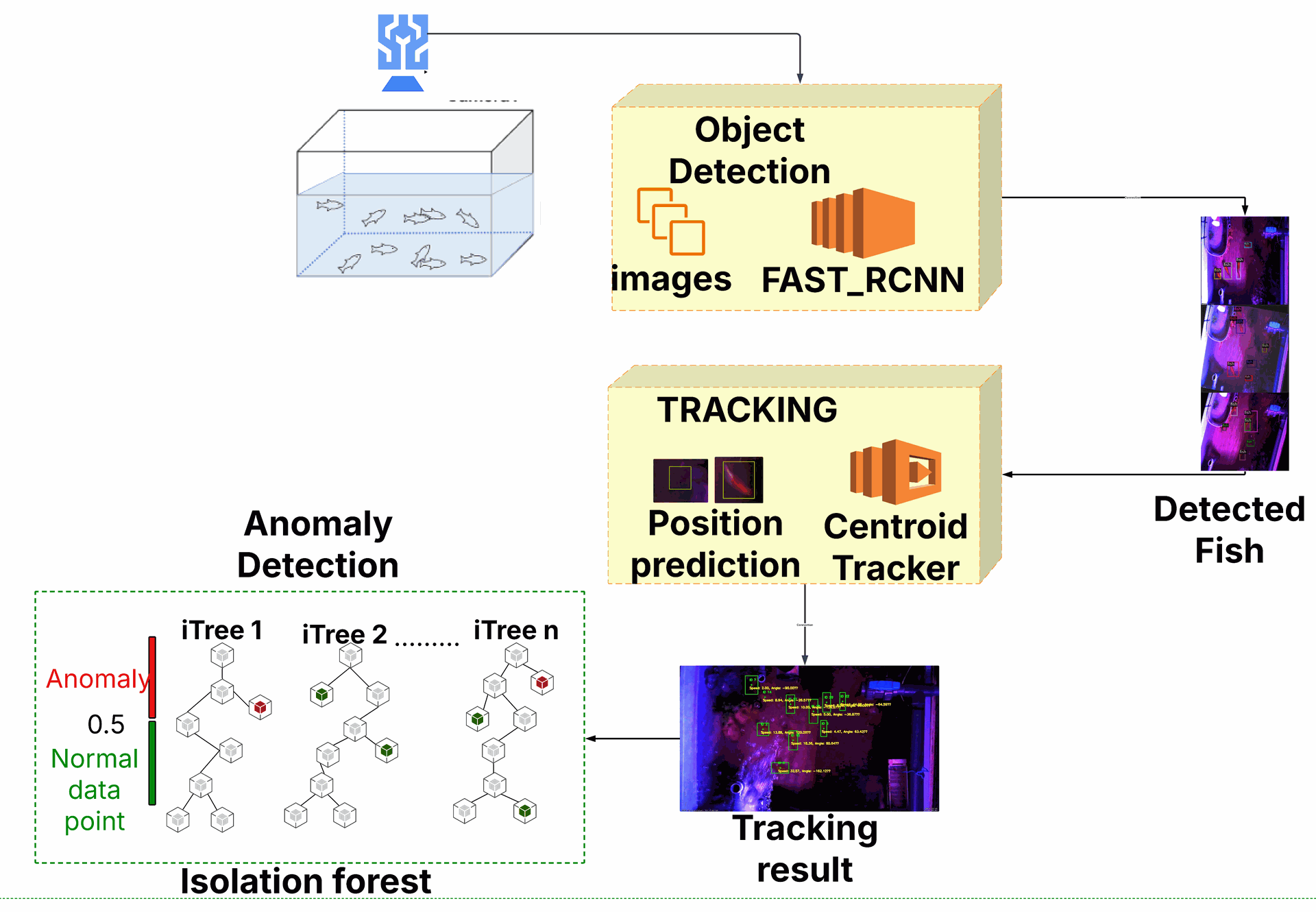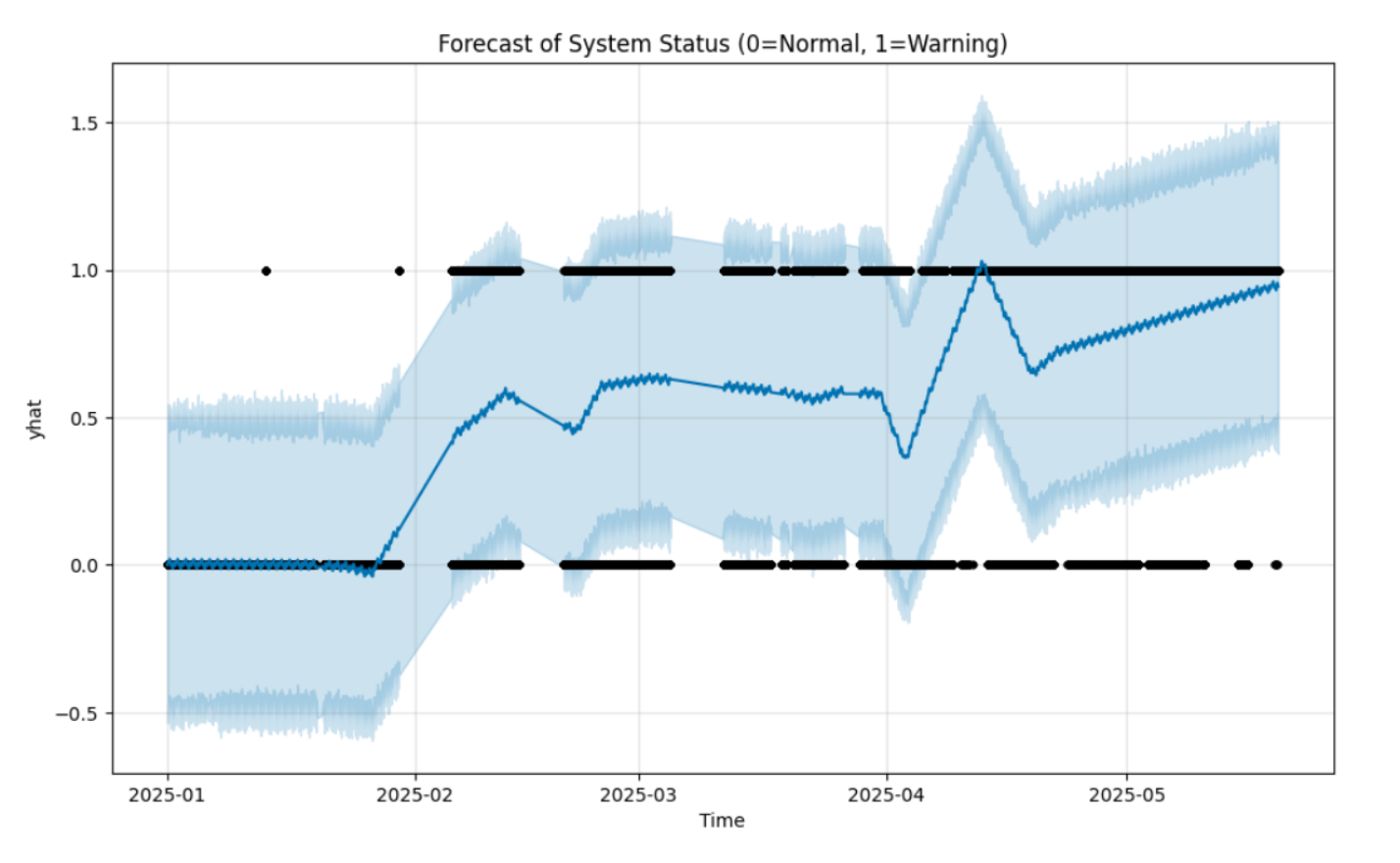Giving Aquaponics a Digital Nervous System
In aquaponics, the balance between fish, water, and plants is delicate. Even small fluctuations in temperature, pH, or oxygen can cause system-wide stress. Traditional monitoring tools rely on sensors to measure these values, but they often miss early signs of change especially those visible only through animal behavior.
To address this, we implemented a system that doesn’t just measure but also perceives. Using computer vision, powered by AI models like YOLOv8 and DeepSORT, cameras track each fish in real time, recognizing patterns in speed, clustering, and movement. The system detects and tracks fish continuously, maintaining accuracy even under reflections and low visibility.
This allows the system to notice when fish behave abnormally for instance, when they cluster together or move erratically long before sensors detect any chemical imbalance. The aquaponics unit thus gains something close to awareness: a digital nervous system that can sense its own health.

Fusion Intelligence: Seeing the Whole Picture
The real power of the project AI lies in its ability to fuse visual and sensor data into a unified understanding of the ecosystem.
Environmental parameters such as pH, oxygen, salinity, and temperature are combined with behavioral features like swimming speed, acceleration, and angular motion. Together, they create a rich, multidimensional profile of system health.
For example:
- Low oxygen + fast movement may signal stress.
- High temperature + reduced activity could indicate oxygen depletion.
- Stable sensors + irregular swimming might reveal an unseen contamination.
To interpret these relationships, we used XGBoost, a powerful machine learning model that classifies system states as normal or warning. It achieved an impressive 96% accuracy, proving that data fusion enhances both precision and reliability.
This model transforms aquaponics from a reactive system into an intelligent ecosystem one that not only measures but understands itself.
Predicting Tomorrow’s Challenges Today
The next step in intelligence is foresight. Using Prophet, a forecasting model designed for time-series prediction, can forecast the system’s condition in advance.
This forecasting capability allows operators to act before problems occur adding oxygen before depletion, adjusting feeding before overconsumption, or stabilizing temperature before stress arises.

The results revealed clear daily patterns linked to feeding and light cycles, proving that the system doesn’t just react it learns the natural rhythm of its environment. This
shift from reaction to anticipation is a cornerstone of sustainable
automation and a defining feature of next-generation urban systems.